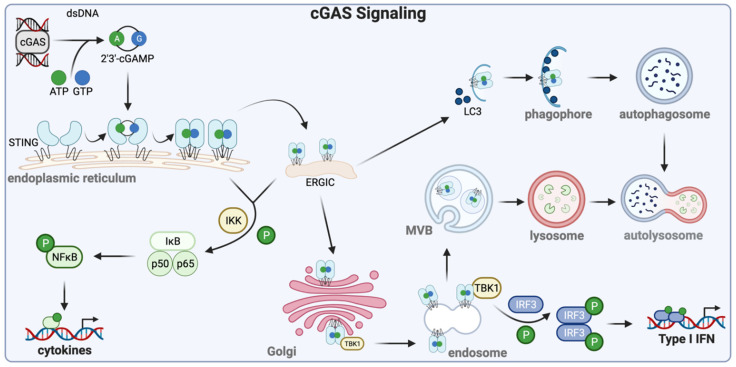Figure 2.
cGAS-STING signaling induces a potent innate immune response. DNA in the cytosol activates cGAS, inducing the formation of a cGAS-DNA dimer. This dimeric complex uses ATP and GTP to then synthesize 2′,3′-cGAMP, which then binds and activates STING via conformational changes in the endoplasmic reticulum. Coat protein complex II (COP II) transports STING as its cargo to ERGIC Activated STING is then translocated to the Golgi or targeted for autophagy via LC3. From the Golgi, activated STING can shuttle to endosomes, where it either undergoes lysosomal degradation via multivesicular bodies (MVB) or recruits TBK1, resulting in IRF3 phosphorylation. Active IRF3 then dimerizes, translocates to the nucleus, and drives the type I interferon response. Alternatively, activated STING phosphorylates IKK, ultimately leading to NFĸB activation. Nuclear translocation of NFĸB induces cytokine production. Created with BioRender.com (accessed on 13 August 2021).

